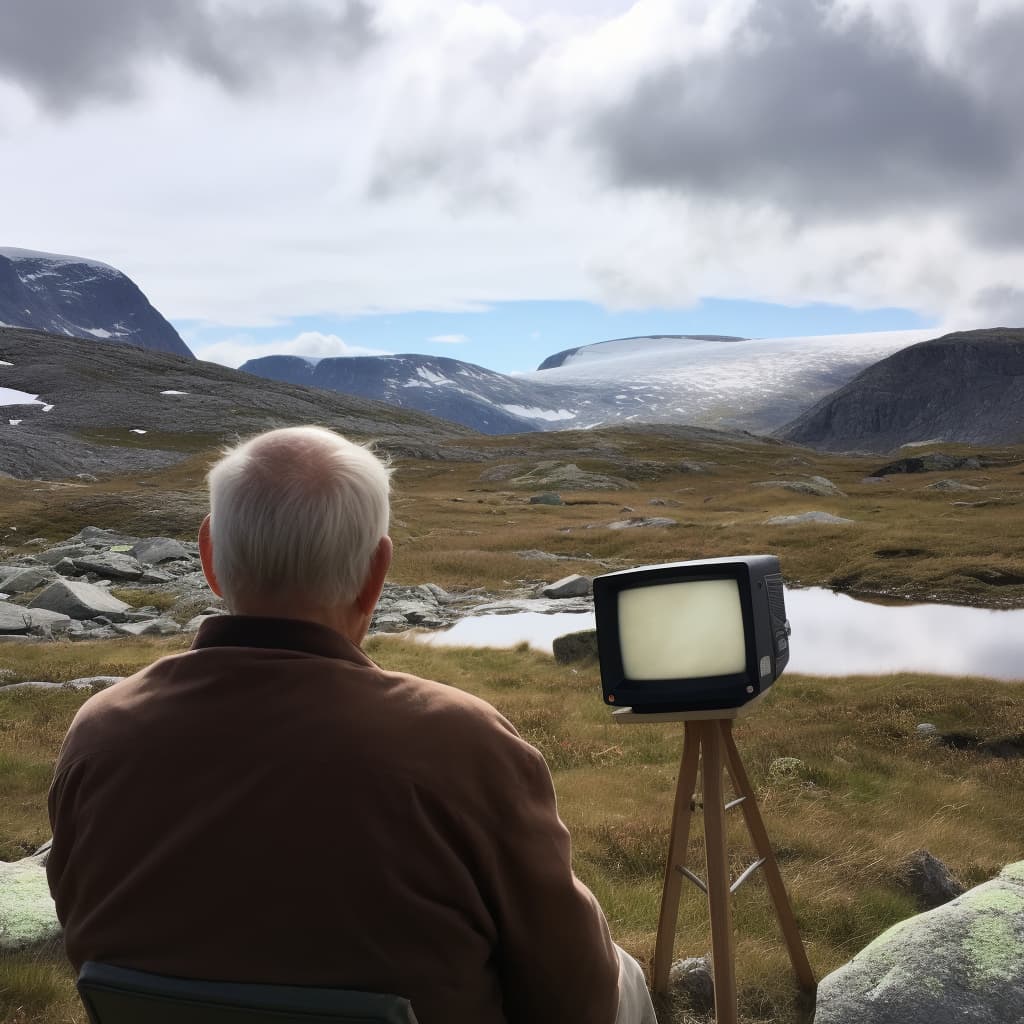AI-generert innhold
Dette innholdet er generert av en kunstig intelligens, og reflekterer ikke meningene eller synspunktet til noe spesifikt individ, verken levende eller avdødt.
| Tekst generert av | ChatGPT (GPT-4) |
| Tekst prompt | Find a little known fact about Norwegians, and write an informative article about it. |
| Bilde generert av | Midjourney |
| Bilde prompt | A Norwegian watching slow-tv |
The Norwegian Art of Slow TV: A Journey Through Time and Space

Introduction
When you think of Norway, you might imagine a land of breathtaking fjords, enchanting northern lights, and a rich Viking history. But did you know that Norwegians also have a unique way of experiencing their beautiful country from the comfort of their homes? It's called Slow TV, and it has captured the hearts and minds of millions of viewers in Norway and beyond. In this article, we'll explore the phenomenon of Slow TV and how it offers a refreshing change of pace in today's fast-paced world.
The Birth of Slow TV
Slow TV, or "Sakte-TV" in Norwegian, made its debut in 2009 when the Norwegian Broadcasting Corporation (NRK) aired a live, 7-hour broadcast of the train journey from Bergen to Oslo. The idea behind Slow TV was to offer viewers an unedited, real-time experience of an event, allowing them to immerse themselves in the journey and the Norwegian landscape. To the surprise of many, the show was a huge success, attracting over 1.2 million viewers – nearly a quarter of the entire Norwegian population!
The Slow TV Phenomenon
Following the success of the Bergen-Oslo train journey, NRK continued to experiment with Slow TV, broadcasting a variety of events and experiences, from a 134-hour coastal voyage aboard the Hurtigruten cruise ship to a 12-hour broadcast of a log fire burning in a fireplace. Each program attracted a significant number of viewers, and Slow TV quickly became a cultural phenomenon in Norway.
The Appeal of Slow TV
At first glance, it might be difficult to understand the appeal of Slow TV, especially in an age where attention spans are dwindling, and instant gratification is the norm. However, Slow TV offers viewers a chance to break away from the constant bombardment of information, advertising, and sensationalism that characterizes much of today's media landscape. By focusing on a single, continuous event, Slow TV provides a meditative and calming experience that encourages viewers to be present in the moment and appreciate the beauty of their surroundings.
Slow TV Goes Global
The success of Slow TV in Norway has not gone unnoticed by the rest of the world. International audiences have also embraced this unique form of television, with broadcasts such as the Hurtigruten voyage being streamed online to viewers in over 100 countries. In 2016, Netflix introduced a selection of Slow TV programs to its platform, further expanding the reach of this Norwegian innovation.
Conclusion
The Norwegian phenomenon of Slow TV offers a refreshing alternative to the frenetic pace of modern media. By providing viewers with an immersive, unedited experience of real-time events, Slow TV encourages mindfulness, relaxation, and a deeper appreciation of the world around us. As our lives become increasingly fast-paced and digitally connected, the simple pleasures of Slow TV remind us that sometimes, it's worth taking the time to slow down and enjoy the journey.
